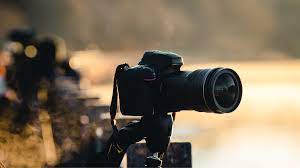As a photographer, your camera is one of your most important tools options on the market, from DSLRs to mirrorless to point-and-shoots and it be challenging to decide what camera is the best fit for your needs and budget. DSLRs and mirrorless cameras have larger sensors than point-and-shoots and camera phones, resulting in superior image quality. Within DSLRs and mirrorless cameras, full-frame sensors are best, followed by APS-C and Micro Four Thirds. Look for a minimum of 20 megapixels if you want to print large or crop images.
Lenses
The quality of your images is also dependent on your lens. Interchangeable lens cameras like DSLRs and mirrorless models you to choose from a wide array of lenses optimized for different shooting situations. For example, a macro lens for extreme close-ups, a telephoto lens to zoom in on distant subjects, a fast prime lens for portraits in low light, and a wide-angle lens for sweeping landscapes. If you invest in a camera system with many lens options, to capture any shot. Point-and-shoots and camera phones have fixed lenses, limiting their versatility.
Size and Weight
An important factor is how portable and comfortable your camera is to carry around. Mirrorless cameras are the smallest and lightest, followed by point-and-shoots and DSLRs. If you plan to mainly shoot casual photos and family snapshots, a smaller camera that fits in your pocket is the best option. But if you don’t mind the bulk, DSLRs provide superior image quality and performance. Think about, and how often you plan to use your camera when considering size and weight. Landscape photographers who regularly hike and backpack may prioritize lightweight gear.
Special features
Think about any special features that are important for your style of photography. Sports or action photographer harrisburg pa might want a fast continuous shooting speed and autofocus capabilities to capture moving subjects. Vloggers and travel shooters could benefit from a flip-out touchscreen. If you shoot events or weddings, look for dual memory card slots to instantly back up your shots. Weather-proof and dustproof sealing would be essential for outdoor, adventure, and wildlife photographers.
Connectivity
If you plan to share your work online, having built-in WiFi and Bluetooth to instantly transfer images to your smartphone or tablet is very convenient. This is to upload shots to social media on the go. Many cameras also have NFC, remote control capabilities through a companion app, and GPS for geotagging images. Think about your content-sharing assessing connectivity options.
Battery life
One often overlooked but very important consideration is battery life. Nothing is worse than missing a shot because your battery died at a crucial moment. DSLRs tend to have better battery life than mirrorless options since on a power-draining electronic viewfinder. Look for a camera that captures at least 400-600 shots per charge. Spare batteries are a must for any serious photographer.
Ergonomics and handling
A camera needs to feel comfortable in your hands to avoid fatigue and smooth operation while shooting. When testing cameras in person, pay attention to the grip, button and dial placement, menu system, and overall build quality. The settings and controls are intuitive without a steep learning curve. Good ergonomic design helps you work more efficiently and makes the process of photography enjoyable.


